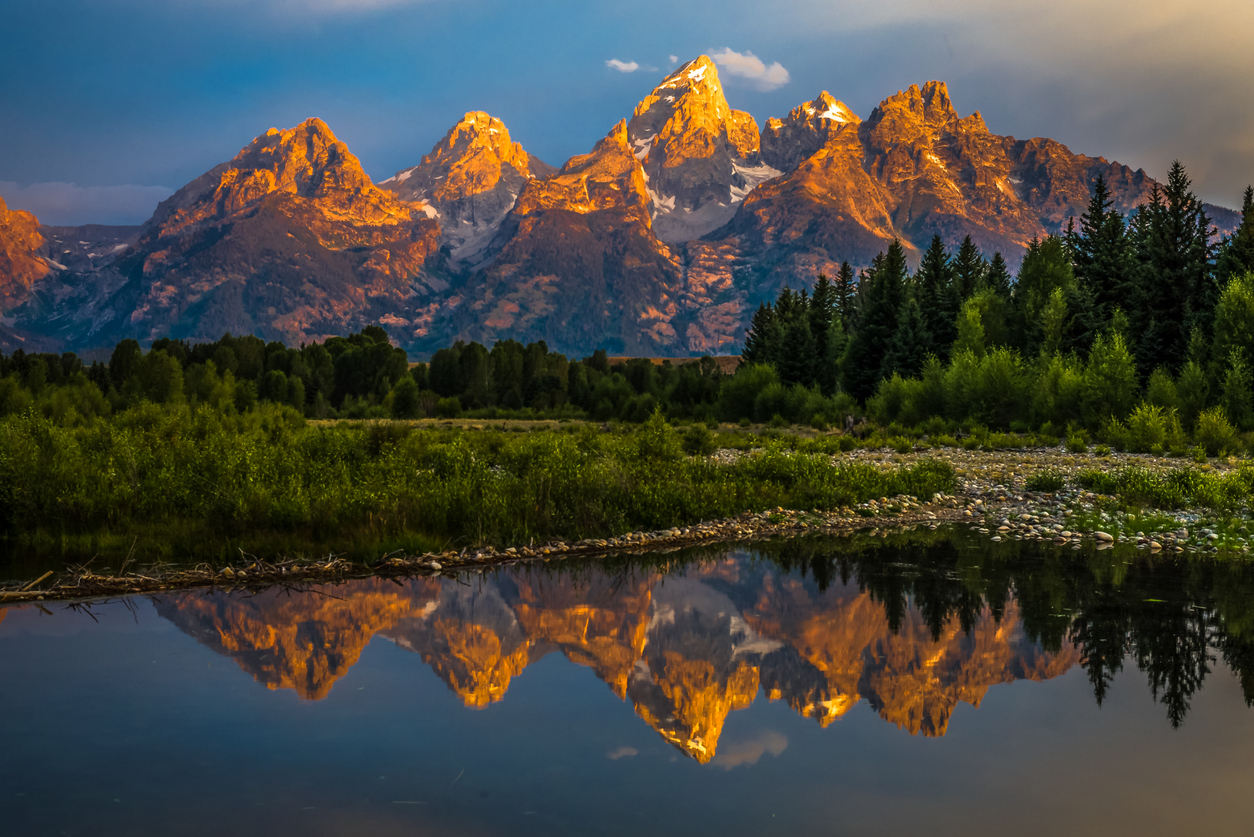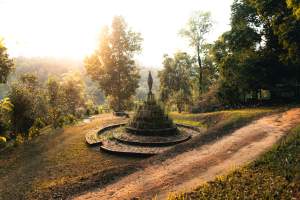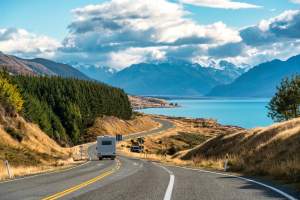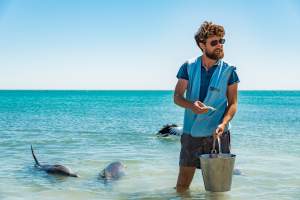
Everyone loves a good national park. But let’s be honest — elbowing your way through Zion’s switchbacks or waiting an hour to park at Yosemite’s Tunnel View isn’t exactly the wilderness experience most people are after. As iconic as America’s most visited national parks are, their popularity can dilute the magic.
Luckily, the U.S. has over 400 units in the National Park System, and many of them fly completely under the radar. These underrated parks still offer staggering scenery, incredible wildlife, and that sense of discovery — just without the crowds, traffic jams, and Instagram-fueled stampedes.
Here’s a curated list of U.S. national parks where you can actually hear the wind, spot wildlife without binoculars, and maybe go a full day without seeing another soul.
1. North Cascades National Park, Washington
Less than three hours from Seattle, North Cascades remains one of the least visited parks in the country. That’s baffling, considering it’s packed with more glaciers than Glacier National Park and crisscrossed with rugged peaks, alpine lakes, and remote trails.
You won’t find big visitor centers or shuttles here — which is exactly the point. This is wild country, ideal for hikers, backpackers, and solitude seekers. Diablo Lake offers a taste of the park’s beauty for day-trippers, while the backcountry routes through the Picket Range and Ross Lake are made for serious adventurers.
2. Great Basin National Park, Nevada
Tucked away in eastern Nevada near the Utah border, Great Basin is a high-desert gem that most travelers blow past on their way to more famous destinations. Big mistake.
This park features ancient bristlecone pines (some of the oldest living organisms on Earth), the towering Wheeler Peak, and Lehman Caves — an elaborate marble cave system you can tour with a ranger. The high elevation keeps temperatures manageable even in summer, and the isolation guarantees pitch-black night skies perfect for stargazing.
You’ll wonder why no one talks about this place. That’s exactly why you should go.
3. Congaree National Park, South Carolina
Swampy, strange, and utterly serene, Congaree is one of the best-kept secrets in the Southeast. It preserves the largest tract of old-growth bottomland hardwood forest in the U.S. — meaning ancient trees, quiet waterways, and a hauntingly beautiful floodplain ecosystem.
Crowds are minimal, even in peak season. Boardwalk trails, kayak routes, and birding hotspots make it ideal for nature lovers who want a slower-paced park. Bring bug spray, but don’t let that deter you — this is a completely different kind of park experience, and one that’s weirdly addictive.
4. Isle Royale National Park, Michigan
Getting to Isle Royale takes effort — it’s a remote island in Lake Superior, accessible only by boat or seaplane. But that barrier to entry keeps the crowds away, making it one of the most tranquil national parks in the system.
The island is a backpacker’s paradise, with moose and wolves roaming freely and no cars allowed. Most visitors come for multi-day treks or kayaking adventures, but even a day trip offers a glimpse into one of the most untouched wilderness areas in the country.
Bonus: It’s one of the few parks that closes in winter, making the short open season (mid-April to October) feel even more special.
5. Black Canyon of the Gunnison National Park, Colorado
Forget the Grand Canyon crowds. Black Canyon delivers staggering vertical drama without the lines. This lesser-known Colorado park features a gorge so narrow and deep it almost feels hidden from the world — hence the name.
It’s less about sprawling vistas and more about shockingly steep drops, tight switchbacks, and rock walls that seem to defy logic. There are short hikes to overlooks, technical climbing routes, and some of the darkest skies in the continental U.S. for stargazing. Best part? You’ll often have it all to yourself.
6. Lassen Volcanic National Park, California
California is synonymous with national parks — but while Yosemite and Sequoia get all the love (and the lines), Lassen sits quietly in the northern part of the state, offering geothermal wonders without the chaos.
Think boiling mud pots, steaming fumaroles, alpine lakes, and lava-strewn trails — all in one compact area. You can summit a volcano in an afternoon (Lassen Peak) and still be back at your campsite before sunset. It’s not remote in the logistical sense, but it sure feels that way once you’re inside.
7. Guadalupe Mountains National Park, Texas
Overshadowed by its neighbor Big Bend, Guadalupe Mountains is a rugged, mountainous park that offers the highest peak in Texas (Guadalupe Peak), ancient fossil reefs, and harsh desert beauty.
There’s not much in the way of amenities, which keeps crowds down. But that’s the appeal: solitude, panoramic views, and some of the best hikes in the Southwest. McKittrick Canyon in fall is especially jaw-dropping when the leaves change color — a phenomenon that surprises many first-time visitors expecting only desert scrub.
8. Theodore Roosevelt National Park, North Dakota
North Dakota doesn’t top many bucket lists, which is why this park is such a surprise. With rolling badlands, bison herds, and wide open spaces, Theodore Roosevelt National Park feels like a hidden Western movie set.
Wildlife is abundant — expect to see prairie dogs, wild horses, elk, and bison on any given day. The park is split into north and south units, each with scenic drives and hikes that rarely feel busy. It’s also one of the most affordable parks in the system, with low camping fees and nearby lodging options that won’t kill your budget.
9. Channel Islands National Park, California
Just off the Southern California coast, this string of rugged islands feels like another planet — and remains surprisingly unvisited considering how close it is to Los Angeles. Accessible only by ferry, the Channel Islands offer dramatic cliffs, quiet beaches, tide pools, and trails you’ll likely have all to yourself.
This park is a favorite for sea kayakers, divers, and whale watchers. There’s no lodging or restaurants on the islands themselves, so day trips or backcountry camping are the only options. That lack of infrastructure keeps the crowds in check — and the experience incredibly pure.
10. Voyageurs National Park, Minnesota
A water-based park that most people have never heard of, Voyageurs is a maze of lakes, islands, and forested shorelines along the Canadian border. Canoeing and boating are the best ways to explore, and houseboat rentals make for a unique multi-day experience.
Because of its layout, even during high season, you can find yourself surrounded by nothing but water, trees, and sky. The solitude is real, and the silence is golden. Fall brings stunning foliage, and winter transforms the park into a snowmobiling and cross-country skiing paradise.
How to Find Solitude in Any National Park
Even the most crowded parks have quiet corners. Here’s how to escape the masses, no matter where you go:
- Go midweek: Skip weekends and holidays. Tuesdays and Wednesdays are often the quietest days.
- Start early: Being on the trail by sunrise isn’t just magical — it gives you hours of solitude before the crowds arrive.
- Avoid “highlight” trails: If it’s on the park map or Instagram-famous, expect traffic. Instead, ask a ranger for unmarked or lesser-known paths.
- Visit shoulder seasons: Spring and fall often bring better weather and thinner crowds than peak summer.
- Camp inside the park: Being there before day-trippers arrive gives you a massive advantage.
You don’t have to sacrifice nature’s grandeur just to avoid crowds. These underrated national parks prove that solitude and beauty still go hand-in-hand — if you’re willing to go a little off the beaten path. Whether you’re into alpine adventures, quiet wetlands, or coastal isolation, there’s a low-traffic park out there waiting for you.
So if you’re looking to reconnect with nature without standing in line to do it, skip the mainstream and go where the air is clean, the trails are quiet, and the views are all yours.







